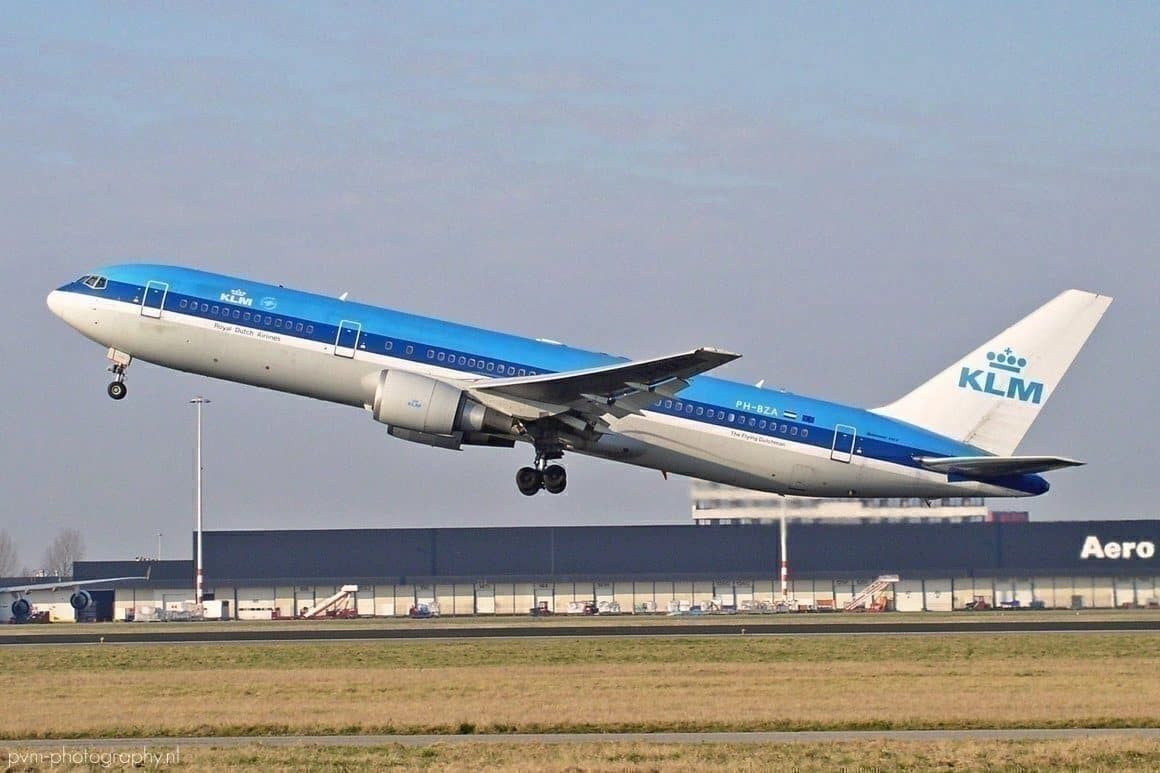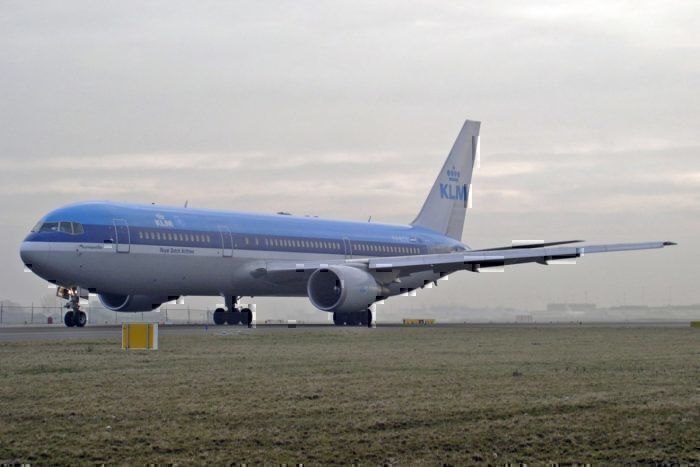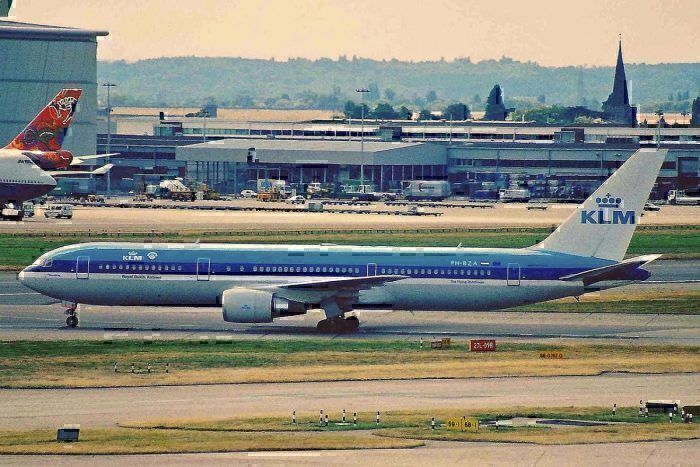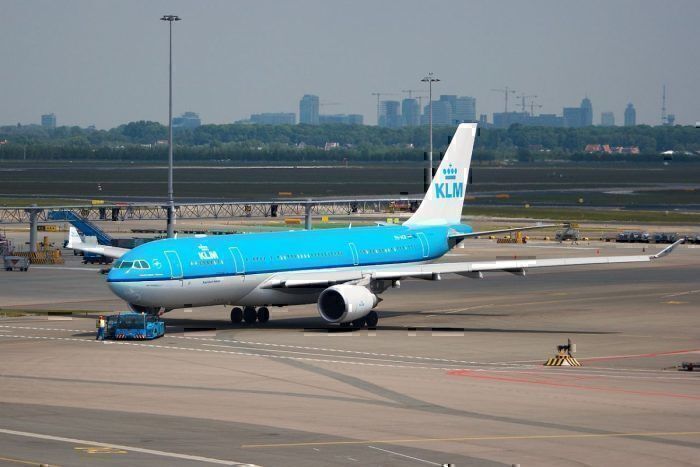The last flight that a KLM (Royal Dutch Airlines) 767-300 ever flew, landed on December 21st 2007, registration number PH-BZO. That was the end of a 12-year affiliation with the Boeing 767 and in this article, we will discuss the 12 767 planes that KLM flew, what happened to those planes and what replaced them
The history of the Boeing 767
Boeing tells us that their 767s were first introduced in September 1981 as the 767-200 variant. Its span was 156 feet and one inch while its length was 159 feet and two inches. It had a range of 3,840 to 7,800 miles and could carry 216 to 290 passengers. The power came from two 48,000- or 50,000-pound-thrust P&W JT9D-R4D or 57,900-pound-thrust GE CF6-80A2 engines. For contrast, South African Airlines, SAA/SAL used to operate a fleet of Boeing 767s too.
The KLM 767 Fleet
All 12 of KLM’s 767 planes were 306(ER) series planes. These planes are longer but no wider than the 200 series at 180.12 feet long and with a 156.17 feet wingspan. It could accommodate from 218 to 328 passengers, depending on the class configuration.
Where did the KLM 767s go?
The KLM 767s had been in service with the airline for 9.59 years, on average, when they disposed of them. They were sold on as follows:
Two planes to each of:
- Neos
- Zoom Airlines
- Air Astana
- Aeroflot
One plane to each of:
- Ethiopian Airlines
- Privatair
- North American Airlines
- MALEV
Currently, all of those planes are still active, according to the database maintained by Air Fleets, and they currently have an average age of 22.77 years. Overall, as a matter of interest, almost 70% of all 767s ever made are still active and almost 22% of them are in storage.
Did you know that in 1982, the tenacious employees of Delta clubbed together to buy Delta their first Boeing 767? Speaking of tenacity, Delta only finally retired from using Boeing 767s domestically this year; 37 years of operation is a good record for Delta and for Boeing.
What did KLM replace their Boeing 767s with?
If we explore the current fleet of KLM, we will see that it has a number of A330-203 aircraft dating from 2005. This confirms that as the airline was winding down its use of the 767, the A332 was its favored replacement.
Of KLM's fleet of Airbus A330-203s, they have two which are 14 years old, three which are 13 years old and one each of 12, 11 and eight years of age.
There is also a suggestion that KLM replaced at least some of its 767s with a 777 and again, a review of their current fleet shows even more 15 and 14-year-old planes in the B777 category. Specifically, they have seven which are 15 years old, three which are 14, three which are 13 and two which are 12 years old.
KLM also operates five A330-303 but they are all under eight years of age.
Fuel efficiencies
Not all data are available for this but these are the medium-haul fuel efficiencies of the aircraft we have been reviewing here:
- 767-200: 3.34 L/100Km per seat
- A330-200: 3.11 L/100Km per seat
- A330-300: 2.98 L/100Km per seat
- B777-200(ER): 2.89 L/100Km per seat
Consider those values over hours flown per year and years the planes are in operation and that gives the Life Cycle View of fuel used. Boeing has prepared such values.
Boeing provides a comparison between the 767-200 and the A330-200 based on a fleet of 179 planes, fuel burned per hour, number of hours flown per year and number of years of useful economic life of a plane, to give total fuel consumed of:
- 767-200: 9,244,524,823 gallons
- A330-200: 11,487,105,544 gallons
These are raw gallons and they do not attempt to provide KPIs such as fuel cost per revenue passenger mile or liters per 100 kilometers.
The latest news on the Boeing 767
While many carriers around the world are looking to retire the 767, the aircraft still has a healthy future in our skies. However, this will not be as a passenger plane.
Boeing has said that because of the growth in demand for air cargo, it is upgrading its production of the freighter to 36 planes a year. This is 20% more than previously, and they expect to achieve that level of output by 2020. Incidentally, this is the third time Boeing has increased output of the 767 since 2016. Boeing has 63 orders so far this year with a list price value of $16.1 billion.




